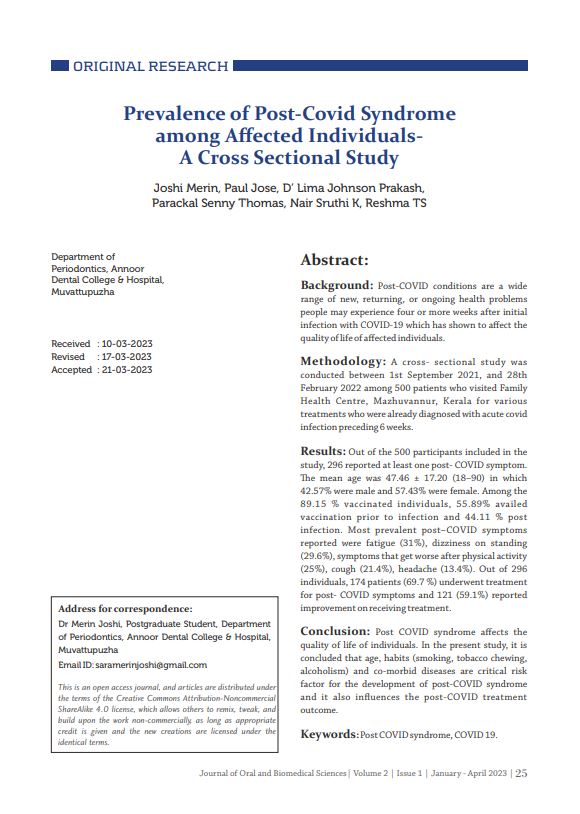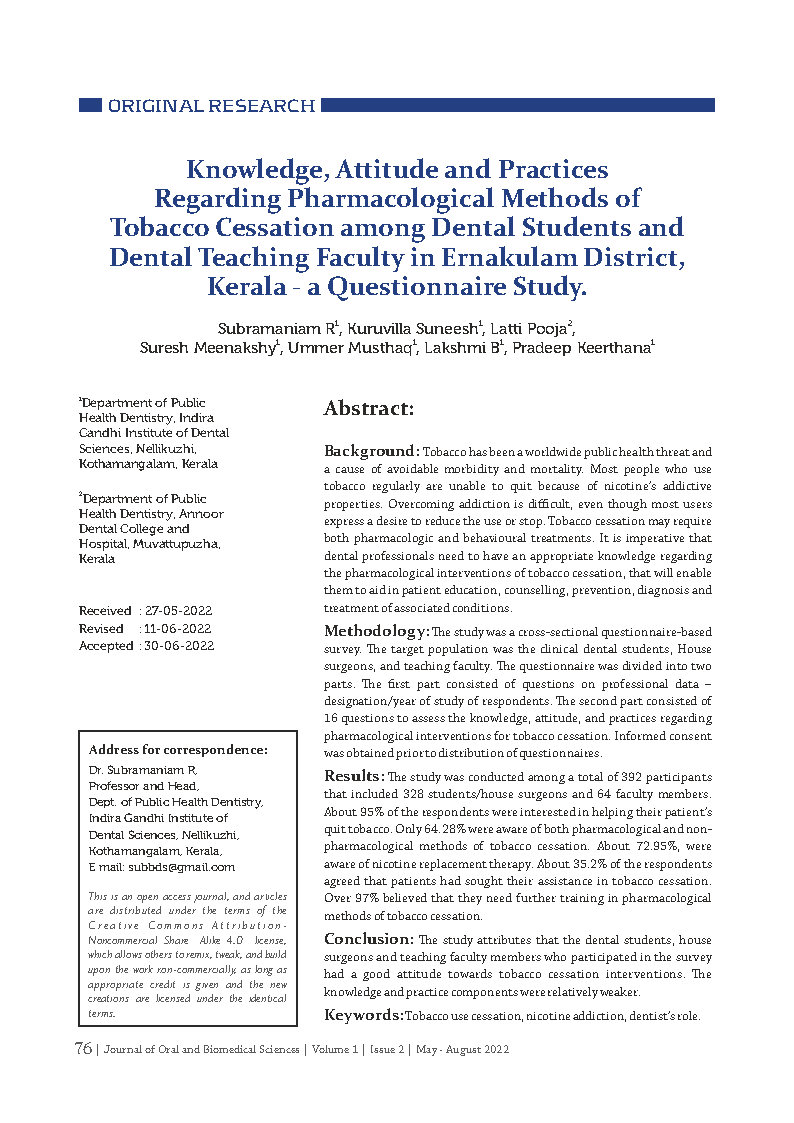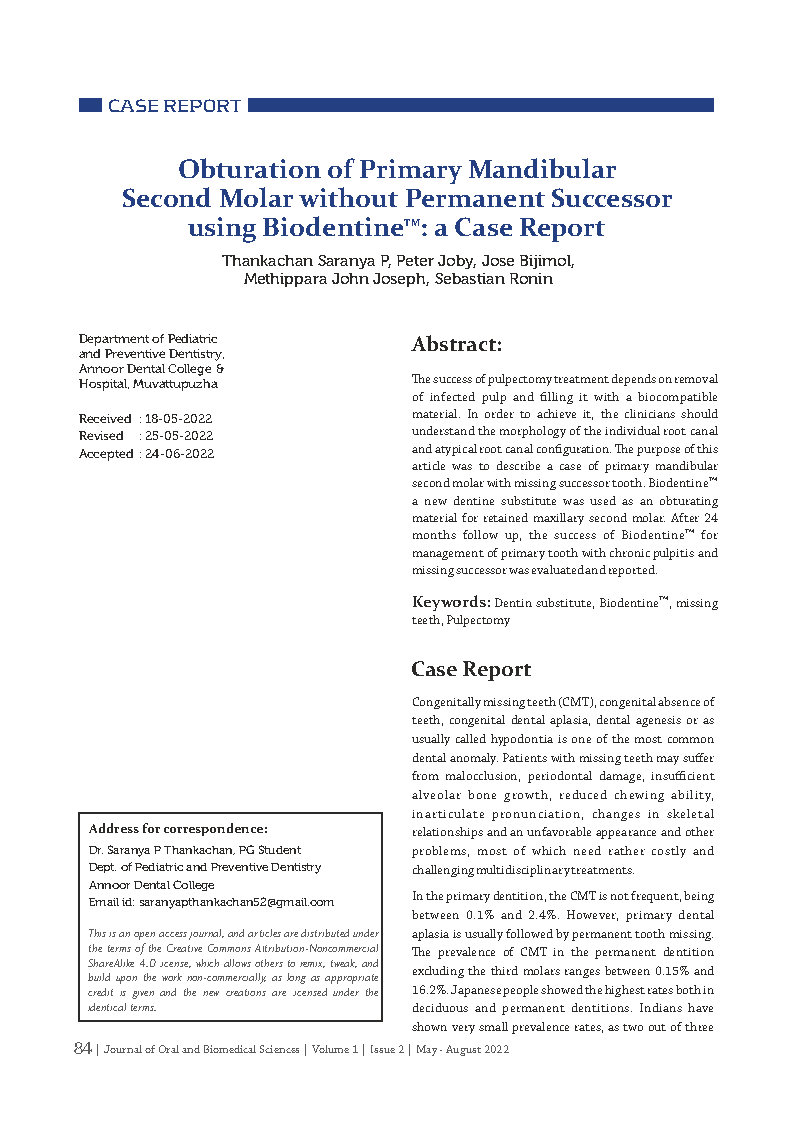Prevalence of Post-Covid Syndrome Among Affected Individuals– A Cross Sectional Study
Background: Post-COVID conditions are a wide range of new, returning, or ongoing health problems people may experience four or more weeks after initial infection with COVID-19 which has shown to affect the quality of life of affected individuals Methodology: A cross- sectional study was conducted between 1st September 2021, and 28th February 2022 among 500 patients who visited Family Health Centre, Mazhuvannur, Kerala for various treatments who were already diagnosed with acute covid infection preceding 6 weeks. Results: Out of the 500 participants included in the study, 296 reported at least one post- COVID symptom. The mean age was 47.46 ± 17.20 (18–90) in which 42.57% were male and 57.43% were female. Among the 89.15 % vaccinated individuals, 55.89% availed vaccination prior to infection and 44.11 % post infection.. Most prevalent post–COVID symptoms reported were fatigue (31%), dizziness on standing (29.6%), symptoms that get worse after physical activity (25%), cough (21.4%), headache (13.4%). Out of 296 individuals, 174 patients (69.7 %) underwent treatment for post- COVID symptoms and 121 (59.1%) reported improvement on receiving treatment. Conclusion: Post COVID syndrome affects the quality of life of individuals. In the present study, it is concluded that age, habits (smoking, tobacco chewing, alcoholism) and co-morbid diseases are critical risk factor for the development of post-COVID syndrome and it also influences the post-COVID treatment outcome. Keywords - Post COVID syndrome, COVID 19











